Practicing good etiquette is vital in any situation but practicing good cold email etiquette is especially critical. Why? Because your email is all the person on the other end has to go on, not your personal charm or engaging body language!
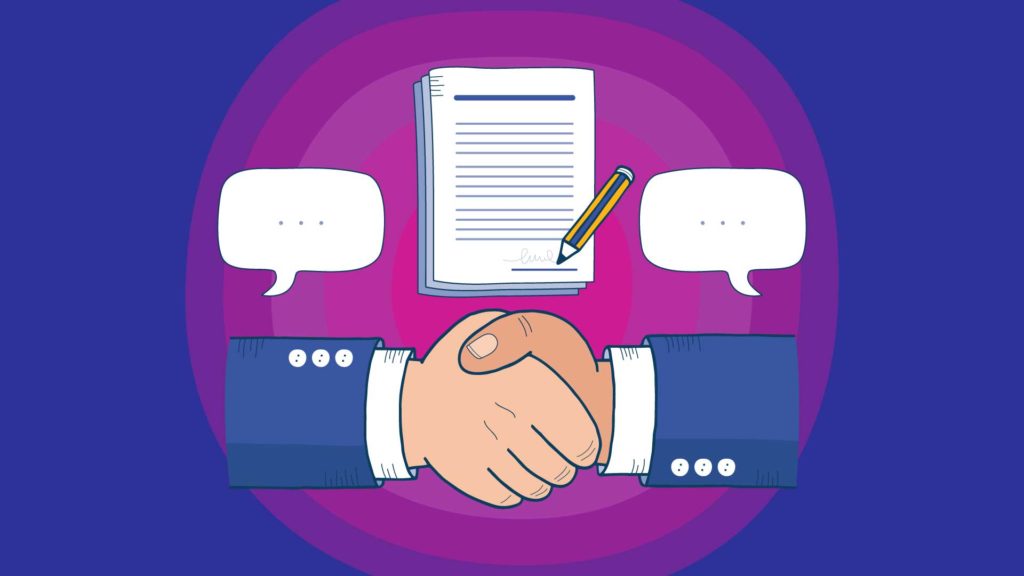
Professional email etiquette is easy enough to define, “the principles of behavior that one should use when writing or answering email messages,” but good cold email etiquette is so much more nuanced than that.

You and the reader have no existing relationship, and a cold email is your chance to change that. Building a relationship is the first step to getting a response that becomes a lead that becomes a sale.
Building a relationship with the reader requires sterling email etiquette. Lots and lots of exclamation points to convey your friendliness are not enough. Luckily for you, we will show you 40 cold email etiquettes you should memorize and implement. Learn them, live them, love them!
This Cold Email Etiquettes Checklist Is the Last & Only One You’ll Ever Need
40 cold email etiquettes may seem excessive. You don’t want to write, and no one is going to read a 700-word cold email. But many of these rules don’t have anything to do with the body of the email, so don’t fear. These sales email etiquettes won’t make your emails longer; they’ll make them better!
Your Email Subject Line, Address, and Introduction
Follow these rules so you don’t start off on the wrong foot.
1. Spend a Few Bucks on a Professional Email Address
Yes, you want to save money. Yes, Gmail is free. No, it doesn’t make you look professional or trustworthy. Have you ever been tasked with going through resumes to hire someone, and you’d see an email address like [email protected]? That resume went straight into the trash. The same thing will happen to your email if you use a Gmail address.
Your email should be something like [email protected].
2. Don’t Forget the Subject Line
Don’t leave the subject line blank. It makes your formal emails look sloppy and unfinished. Like you dashed it off just before running out the door for the day. The ideal subject line is short, descriptive, and tempting.
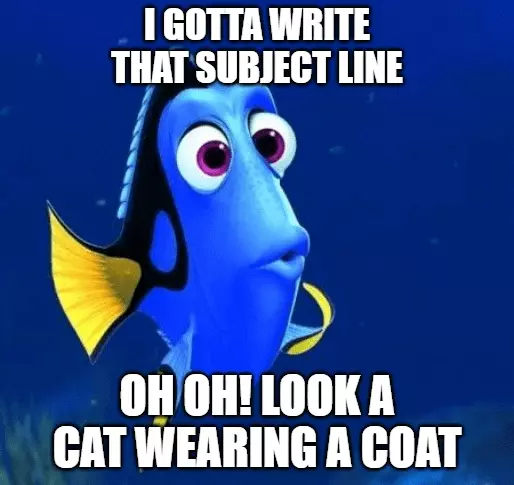
The point of the subject line is to get the reader to open the email. So, pique the reader’s curiosity. But, don’t deceive or lie to them, because they will never trust you again.
Ask the reader a question, offer them a solution to a problem someone in their position may have, offer to save them time or money, two things everyone needs more of.
3. Allow Me to Introduce Myself
The first rule of cold email etiquette or any other kind of etiquette is to properly introduce yourself to the email recipient and tell them the company you represent. People want to know who it is addressing them and cluttering up their inbox on a busy workday! If you fall at this first hurdle, you’re likely to fail overall.
4. Greetings and Salutations Matter
People get unreasonably angry when you don’t address them properly. Do your research to learn how the recipient identifies themselves, Mr./Ms./Mrs./Miss. Get this wrong, and you might as well start your email with, “Hey you!”
If you can’t find out what prefix they use, try “Good morning/afternoon,” or a simple “Hello.” Avoid sounding too casual. “What’s up” or “Hey there!” are too casual.
Essential Email Etiquette Rules
There is room to put some of your personality into your business communications but there are some cardinal rules you must always adhere to.
5. Oh No! Not Comic Sans!
I was going to write the above actually in Comic Sans to drive home the point but was afraid my boss would get mad! That’s how bad Comic Sans is! Repeat after me, “Arial, Times New Roman.” Those are the only two fonts you may use in any kind of business correspondence!
6. Know Your Stuff
Do you know what makes a cold email feel less cold? Personalization. How do you personalize a cold sales email?
Know a lot about the person you’re addressing and the company they work for. Who is the recipient, what is their position, where is the company located, what is the yearly revenue?
Fun Fact! Did you know personalizing your subject line can increase the response rate by 50%?
7. Oh, so You Think You’re Funny?
Nothing much offends me, and I have a good sense of humor. Not everyone is the same, and you’re not delivering a joke over drinks. You’re writing it. To a stranger who has no body language, eye contact, tone of voice, or facial expression to read, just your written email communication.

When making a joke in a cold email, it should be one you would 100% tell a nun. If you wouldn’t say it to a nun, don’t put it in a cold email. And never use inappropriate language in work-related correspondence.
8. OMG, WYD? IKR? No Text Speak!
If you’re over age 18 and reading this, I’ll translate the above. Oh my God, what are you doing? I know, right? Do not, under any circumstances, use texting abbreviations in a business email. It is wildly inappropriate and unprofessional. Anyone reading an email with text speak will immediately delete it and probably block the sender. And rightly so! This goes double for emojis in emails.
9. STOP YELLING! Don’t Abuse the Caps Lock
There may be points or words you want to emphasize in a cold email. And that’s fine. Doing so properly, with bolding or italics, can help you do so and can help the reader better digest what you’re trying to get across. But don’t literally highlight text and never use all caps! It’s the written equivalent of screaming and bad email etiquette.
10. You’re Awesome!
It’s true; it’s why everyone wants to be your friend. You have that perfect balance between friendly and respectful, not too casual but not too formal either. Being overly familiar looks unprofessional and can offend some people. But being excessively formal looks like you’ve copied your email from a business guide written in the 1890s.
No, “What’s up my dude?” but no, “Good afternoon gentle sir,” either.
11. Be Mindful of Differences
There are language, cultural, and geographical differences between regions, even within the U.S., never mind when working with international clients. Understand these subtle and not-so-subtle differences when writing cold emails. Your copy may not be relevant to the prospect if you don’t write with these differences in mind.
12. Proofread, Proofread, Proofread!
Aaargh! Never, EVER send an email message without proofreading every word, space, and punctuation mark from the subject line to the closing. In fact, use a program to do it for you because when proofing our work, we often miss things. Sometimes glaring things! Embarrassing. I like Grammarly for finding grammatical errors.
13. Punctuation Too
Another great thing that a proofreading program does is correct punctuation. I have been a professional writer for nine years, and I still never remember to put a comma after the word “and.”
Does a good writer have to do that? No. You can be a compelling writer without perfect punctuation. But you can’t be a professional writer without it.
What Potential Customers Want
The person you’re emailing is busy. You have to give them what they want fast.
14. What About Me?
What about you? This is not about you. The way to charm someone for a date, a job, a sale, or anything else you want from them is to laser focus on them.
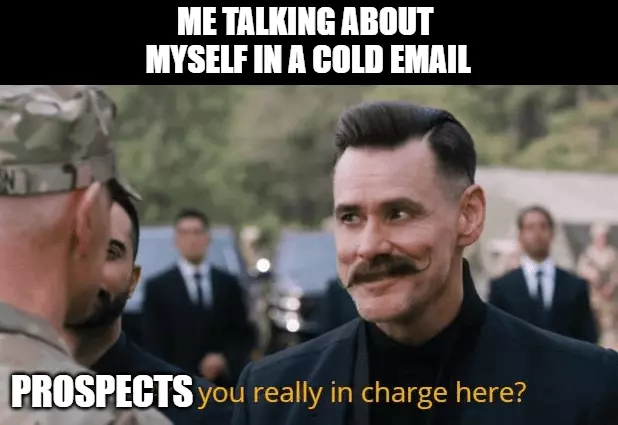
Don’t talk about yourself too much. That will come later when you have their interest, and it’s time to sell yourself.
15. What’s In It for Me?
That is all the person reading a cold email wants to know. Your email should be all about what you can do for the reader to make their job easier, make them look better to their boss, or make their company more money. If they think you can do any of those things, they’ll keep reading.
16. Show Your Appreciation
The person reading your cold email could change your fortunes for the better. They could be your next big client and refer you to additional clients.
A person who can do so much for you deserves your appreciation. Personalize your language in a way that conveys your appreciation for them. Sincere compliments are always welcome too you good looking thing you!
17. Hone Your Elevator Pitch
The person you are writing likely receives dozens of emails, maybe hundreds each day. You have 30 seconds to capture and hold their attention. Short and sweet converts better.

Some readers may not even bother skimming an email with several long paragraphs. If you try to take up more than those precious 30 seconds, your chances of converting them plummets.
18. What on Earth Is Your Point, Dear?
You are not a film flam artist. The person you’re writing knows you want something from them. There is nothing inherently wrong with that unless you’re trying to take advantage of someone. But when you try to hide this obvious fact with a lot of circular language, it looks suspicious. Like, maybe you’re from an MLM or something!
Be precise, upfront, and to the point.
19. No, I Would Not Like to Subscribe to Your Newsletter
A cold email is a pitch; it is not a roundup of the latest happenings at your company, complete with pictures of the annual picnic. Including too much promotional information formed in achingly long paragraphs is sure to be a hard pass. No one has time for that, and furthermore, no one cares!
20. Don’t Be Overly Familiar
There is a line between making your cold email personal and stalkerish, and it’s not a very thin line. If the recipient hasn’t posted something on LinkedIn, don’t address it in your email, even if you found out they recently went on a skiing vacation from some other source. Personalize things, yes, but stick to their professional life.
21. Be a Little Needy
People like to feel needed, to feel like they’re helping their fellow humans. We all see ourselves as good people, and doing a favor for someone reinforces that belief. A cold email is literally you needing something from the reader, a total stranger. Showing a little vulnerability in your email can make them want to help you.
22. Be Nicer to Your Prospects Than You Are to Your Mom
You may get a curt or even downright rude response to a cold email. You have no idea why. Maybe someone with your first name stole their spouse! Whatever the reason, it’s likely not personal. Even though it feels personal! Always respond with kindness. Be apologetic and never fire off a response when you’re angry. Once you hit “Send,” you can’t take it back.
23. Don’t Waste Time
For any number of reasons, the person reading your email may not be interested. Maybe you had bum intel, and it wasn’t a great prospect, maybe someone beat you to the punch, perhaps they’re busy.
You don’t want to waste their time reading or your time following up a dead end. Give them an out, send a breakup email. Tell them it’s okay if they can’t get back to you right away, and include a link to unsubscribe when applicable.
A Final Checklist
Any email you send must go through this final checklist before you hit “Send.”
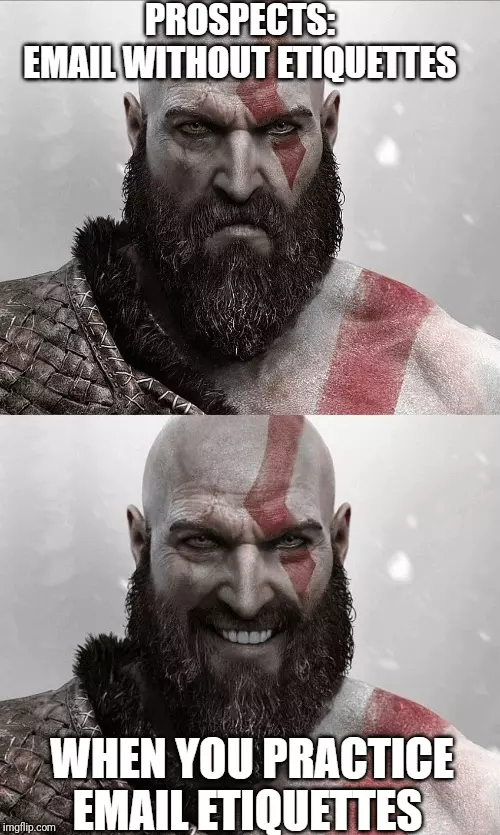
24. Don’t Be Passive Aggressive
Look, you both know why you’ve sent that cold email. But that doesn’t mean you can brute force things. You still have to pitch a little woo. No one likes being told what to do. People prefer to be persuaded on what to do. Sounding too “salesy” and pushing a prospect too hard is ham-fisted and a sure turn-off.
25. Sign Off Professionally
Your email signature carries a lot of weight. It provides your contact information, boosts brand awareness, makes your email look more professional, sets you apart from spammers, and helps to establish your authority.
Your full name, business address, and phone number are non-negotiable. You may also consider including a professional headshot, trust-building social media links, your company domain, and a CTA.
26. Check, Check, Check!
This is another thing proofreading programs can’t check for you, whether any links you include are correct or working. Be sure to triple-check that things like meeting, calendar, or trial links are accurate and live. A broken link could mean a broken heart. That’s hyperbole, but the point stands!
27. Keep Up With Current Events
Always keep an eye on the current happenings of the company you’re prospecting and the geographical region the company is in. If the company has just declared bankruptcy, you might want to move along. If the area has just suffered a major natural disaster, the company may be temporarily closed.
28. Run A/B Tests On Email Elements
Run an A/B test, also called a split test, on two versions of your email to see what gets the best response. Your cold email contains multiple elements, a broken-down anatomy might be just what you need to understand it properly.
Take a step back and read it yourself. Would you respond favorably or at all if you received this email? That’s easier said than done, though, so getting an outside opinion is helpful too.
Preventing Problems
You don’t want your carefully crafted fantastic email to go to waste. Be proactive and prevent problems before they occur.
29. Avoid Attachments
You are not yet on the recipient’s “safe” email list. That means you might end up in their spam folder, languishing for eternity. Or at least until their spam folder is automatically emptied. To reduce the chances of this happening to your perfectly crafted and imminently important email, don’t add attachments.
Attachments can reduce the chances that an email will be safely delivered to the recipient’s inbox.
30. Use PDFs
We’ve already discussed not sending attachments in a cold email. Once you get a response, sending files may be necessary for the next step. Rather than adding Google or Word Docs, use PDFs.
PDFs are universally compatible, so you won’t frustrate the recipient and have to do that awkward back and forth until they have a file they can access.
31. Ask to Be Redirected
Sometimes, despite your best due diligence, you send an email to the wrong person. Your intended target may have gotten a promotion since you did your research and someone else filled their position.
This isn’t a cold email sin. Just politely ask to be directed to the correct person.
32. Ask Before Forwarding
I usually go by the adage, “It’s better to ask forgiveness than permission,” but not in every scenario. If you need to forward a response email to someone else, ask the sender first, no matter who you’re planning to share it with. There may be files or data, or other sensitive material they don’t want to be passed around.
33. Psst, Can You Keep a Secret?
Any cold email or any business email you write should be considered public information. Don’t put it in a business email if you wouldn’t shout it through a megaphone on 5th Avenue. Even if you develop a friendly rapport with someone, they are not your friend. They are still a business associate.
34. Mind Your Tone
The written word has no tone of voice, body language, or facial expressions to give it nuance. The only “tone” of an email is the words you’ve written.
Unwittingly, you can come across as having an attitude or being condescending. Proofreading programs don’t pick up these sorts of things, so it’s best to run your email by a co-worker before sending it.
35. Hello? Anyone There?
Never ghost an interested prospect! Also, never hover over your inbox when you’re not on the clock. Work/life balance and all that! If you’re going to be away from the office, be sure to set up an automated “Out of office” response. It’s just good etiquette to let a prospect and any other business contact that you’re not available and when you’ll be back.
36. Respond Promptly
Inbox Zero is always the goal, but you need to prioritize your responses. If you don’t respond to a hot lead quickly enough, someone else might just slide into their DMs, and you’ll be out in the cold, your perfectly crafted cold email with exquisite etiquette wasted! Always answer promptly.
37. Avoid Affiliate Links
A cold email is not your business blog or social media post. Do not include affiliate links. Granted, this is not something we’ve seen often, but we have seen people send affiliate links and then add a CTA in an email. Never do that!
38. Give Me a C, Give Me a T, Give Me an A, CTA!
What do you want the reader to do after they’ve read your email? Call you, email you back, ask you for additional information, schedule a meeting? Don’t assume the answer will be apparent to the reader.
Ensure you always include a CTA (Call To Action) in your cold emails and give the person the information they need to act on it. Limit your CTA to one; anything more is overkill and looks a bit desperate.
Know When To Quit
Follow-up emails are important. But so is knowing when to admit defeat.
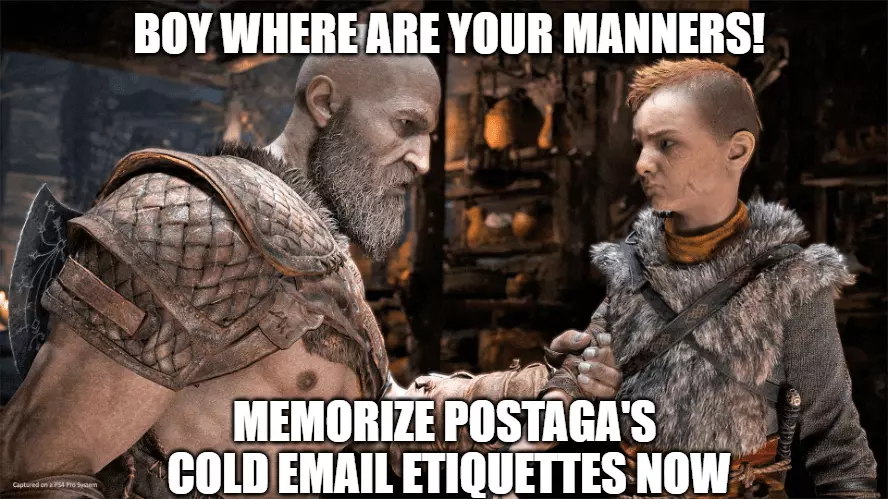
39. Know When to Fold ‘Em
Sometimes, despite your absolute best efforts, you just run up against a brick wall. It happens to everyone, and none of us likes it. But know when to stop. They’ve not returned your initial email or any follow-ups.
They did respond, and the response was a flat-out, “No.” Getting the Big No is actually a kindness. They did take the time to respond and save you wasting time with follow-ups.
40. Desperation Is the World’s Worst Fragrance
No one wants to deal with a pushy, desperate person. Not in the dating world and not in the business world. The absolute limit is five emails, the first one, and four follow-ups.
The time between emails should be three to four days. If you’ve not heard back after five emails which are 15-25 days, it’s time to cut your losses and move on.
To Wrap It All Up

Sending cold emails is a numbers game. No matter how great your company is, your product is, and you are, the nature of cold emails means that a lot of them will go unred and unreturned. But using a combination of these 40 cold email etiquettes and Postaga, you can increase your positive response rate!
FAQs
In the morning between 9-11 am, but not on a Monday when people are typically most busy and tending to urgent matters for the week or following up on issues from the week prior.
In a follow-up email, ask the reader if they might like to schedule a quick, ten-minute follow-up phone call. But don’t call out of the blue.
If you know someone who knows your target, there is nothing wrong with asking them to put in a good word. That’s what a network is for!
Sure! Word of mouth is great for business. You and the initial prospect may not be a fit for whatever reason but they may know someone in desperate need of what you have to offer.
Free 14-Day Trial
Start building relationships now with your fully-featured 14-day trial!
How We Compare
Terms | Done-For-You Terms | Privacy | Write For Us | Press
© 2025 Postaga. All Rights Reserved. Made with 
